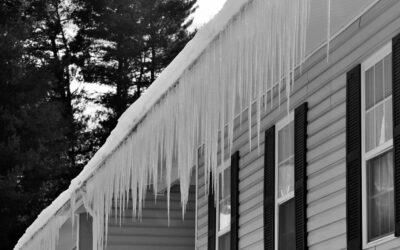Siding is crucial in defending your home from the elements rather than just being a decorative element. Determining when to replace siding can be challenging, particularly if you’re uncertain about its age or condition. In this guide, we will explore the significance of siding, indicators that suggest it’s time to replace siding and suggestions for ensuring a successful siding installation.
The Importance of Siding: Protection and Aesthetics
Siding protects your home from wind, rain, and other environmental factors. For a comprehensive understanding of how siding protection enhances your home’s value and safety, check out our detailed guide on siding protection for homes in Plymouth. Regular inspections and understanding the signs of wear can help you decide when to replace or repair your siding.
Vinyl Siding Benefits: Durability and Low Maintenance
Due to its durability and low maintenance requirements, vinyl siding is a popular choice among homeowners. It can mimic the look of wood, making it a cost-effective and attractive option. However, vinyl siding isn’t impervious to damage. It can be affected by wind, debris, or improper handling, which may lead to issues over time. For more detailed information on vinyl siding, including its pros and cons, check out this 10 Reasons to Reconsider Vinyl Siding article.
Signs of Siding Problems: When to Act
Identifying siding problems early can save you from more extensive repairs or a replacement. Look out for the following issues:
- Cracks and Buckling: These can be caused by extreme weather conditions or poor installation.
- Hail Damage: This can leave dents and dings, compromising the integrity of the siding.
- Delaminating or Warping: This often occurs due to moisture getting trapped behind the siding.
If you notice these signs and the damage is severe, or moisture is present, it might be time for a more extensive repair or replacement. For a detailed guide on how to repair vinyl siding, visit this resource.
Repair vs. Replace: Making the Right Choice
Deciding whether to repair or replace your siding depends on the extent of the damage:
- Minor Damage: Small cracks or isolated issues can often be repaired with siding kits or by replacing individual panels.
- Widespread Damage: If the damage is extensive, involves mold, or if the siding is older (typically 10-15 years or more), replacement might be the more prudent choice.
Water Damage and Mold: Serious Indicators
Water damage and mold are significant red flags that indicate more serious issues. Mold often grows beneath the surface of the siding, signaling that there may be extensive damage or moisture problems behind the scenes. Addressing these issues typically requires full siding replacement to protect your home’s structure and prevent future problems.
Choosing a Contractor: Ensuring Quality Installation
Choosing a reliable contractor is crucial for a successful siding replacement. Research potential contractors, read reviews, and ask for references. For a detailed look at siding costs and what to expect during the process, refer to our article on new siding costs and expectations.
Determining when to replace siding involves assessing its condition and understanding the associated costs. Whether opting for vinyl or another material, timely replacement and professional installation are key to maintaining your home’s safety and appearance. Understanding the best time to replace siding can help you make an informed decision and ensure your home remains protected and beautiful. For expert advice and top-quality siding replacement services, contact Keystone Builders. Our team is here to help you navigate the process and ensure your home is protected for the future.



